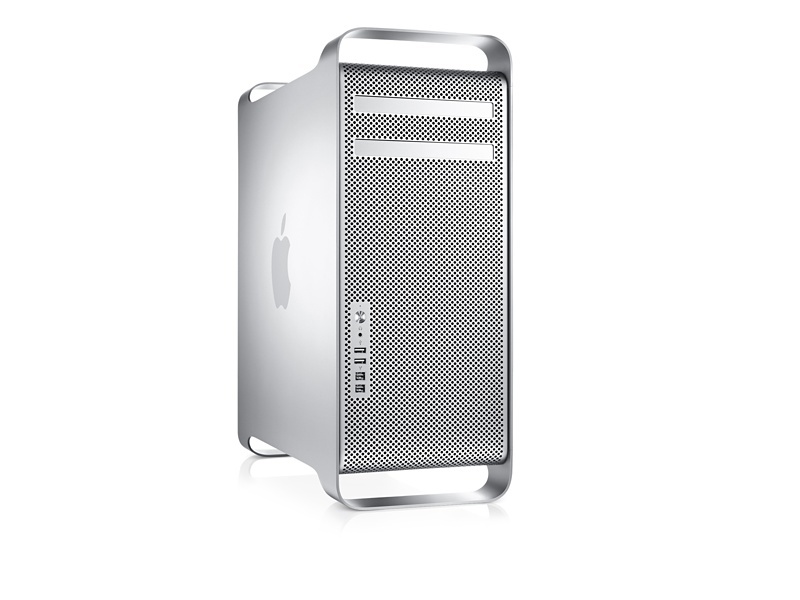Article Index. Where to find things.

The best computer from Apple. Ever.
In this series of articles I show how to upgrade a 2009 or later Mac Pro to current technologies.
- There are many photographs illustrating mechanical processes.
- I put heavy focus on objective measurements of performance changes.
- All upgrades shown have been tested on one or more of my Mac Pros.
- You will never read words like “…. it feels faster ….” here. Such expressions are meaningless.
- Choices for a used Mac Pro.
- Why the 2009 Mac Pro.
- FU Steve retires.
- Aspects of improving performance.
- Stock Geekbench and Cinebench data.
- Cable dots.
- Enhancing memory and its correct installation.
- Native Airport card installation for wi-fi.
- Processor cage removal.
- Migrated Hackintosh issues.
- Power consumption data.
- Installing 2.5″ drives properly.
- Firmware upgrade from 4,1 to 5,1.
- Updating EFI.
- SMC and PRAM resets.
- Maximizing internal storage.
- Relocating an SSD to the optical bay area.
- Blu-Ray DVD reader/burners and Superdrives.
- Where to buy the Service Manual and why one is essential.
- Original Mac Pro web page at Apple.com and selling prices.
- Repairs – common repair parts, sources and cost.
- All about graphics cards.
- Better graphics with non-Apple aftermarket cards.
- Graphics card installation and benchmarks.
- Multiple displays.
- Sound levels.
- Anomalies with non-‘Made-for-Mac’ cards and their resolution.
- Running two graphics cards.
- Revised power consumption data with two cards.
- nVidia web drivers.
- The value proposition.
- Why the Hackintosh no longer solves as an OS X machine.
- Temperature and fan issues.
- Cooling down the hot Northbridge chip.
- Power consumption.
- Stress tests and diagnosis of problems.
- The all in cost of a state-of-the-art Mac Pro.
- What are the major Mac Pro models and their differences?
- Don’t be cheated by firmware upgrades.
- How to look up your serial number.
- Buying used – what to look for and what to avoid.
- Install a powered USB3 card for a 100%-300% performance gain.
- Parts and cost.
- Benchmarks.
- The unpowered USB3 card option.
- Adding a Blu-Ray burner.
- Back-up strategy.
- The Mac Pro as a Home Theater PC.
- Model choice.
- Enabling HDMI.
- USB3 for Blu-Ray movies.
- Install a SATA III card for a 100% performance gain.
- SATA III drive installation and expansion options.
- Converting old SATA II drives to SATA III speed or better.
- Adding a larger SATA III data HDD.
- PCIe slot power use and limits.
- Striping two SATA II HDDs into one using RAID 0 for SATA III speeds.
- Performance data.
- A poor value for still photographers.
- Can be easily outperformed in PS and LR with a 2009 4-core for 33% of the cost of the nMP.
- A ‘Made for Mac’ EVGA nVidia GTX680.
- 4K capability comes stock.
- A cost effective upgrade for the new breed of displays.
- Power use and performance data included.
- An expensive machine.
- CPU, SSD and memory upgrades.
- Most likely required for a machine which refuses to chime or boot.
- An easy job once the error in Apple’s Technician’s Manual is corrected.
- A powerful analytical tool.
- No longer installed on modern Macs – follow this to install it.
- Required to use Handoff and Continuity with OS X Yosemite.
- Allows phone calls to be made from the MacPro with an iPhone nearby.
- RAID 0 with an Apricorn Duo PCIe card.
- An inexpensive solution offering Thunderbolt disk speeds.
- The best non-4K LCD display in the business.
- Addresses the two models of the display Apple sold.
- Issues with the DVI dual link to MiniDisplayPort/Thunderbolt adapter firmware versions are identified.
- Using two Displays at full resolution with the Nvidia GTX680 and GTX980 GPUs.
- Parts and repair sources are linked.
- The fastest storage approach available.
- New inexpensive PCIe card allows four mSATA drives to be installed in one PCIe slot.
- Yosemite is a retrograde step for keeping things cool.
- How to remedy that.
- One of the fastest graphic cards on the market.
- Exceptional performance, less noise, less power consumption.
- Apple’s Fusion Drive technology can be applied to dual SSDs.
- A Fusion drive allows a Recovery Partition to be created, unlike with a RAID0 drive.
- Ideal for speedy backups with an additional failsafe, if not as fast as RAID0.
- Huge real estate.
- Two of these need a dual DisplayPort graphics card.
- Excellent value for money.
- OS 10.11 El Capitan is a disaster.
- Avoid at all costs.
- Apple is the new Microsoft – add ‘feature bloat’, subtract stability.
- Broken drivers yield a Catch 22 situation
- Several ways around this
- Hold your nose
- A cheap way to install Windows 7 Pro, the least bad version of Windows
- Bootcamp provides optimum performance
- Function over form returns
- If you ask ‘How much?’, you cannot afford it
- Ugly, too
- Not much change from $65k
- The monitor stand and roller legs for just $1400 extra are bargains
- Butt ugly, but I’m having the innards rehoused in the classic Mac Pro case
- $1000 gets you one of the fastest image processing rigs available
- Infinitely repairable
- Nice to look at
- No need for a new GPU to do your taxes
- HR Block’s software works fine with OS X High Sierra
- Adding Metal compatibility
- For use with the latest OS X versions – Mojave and Catalina, where Nvidia GPUs do not work